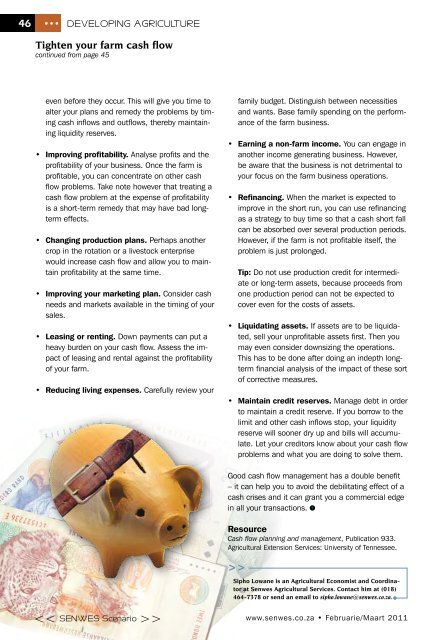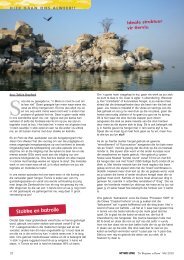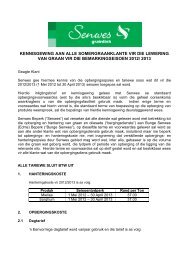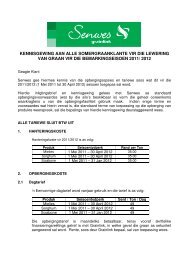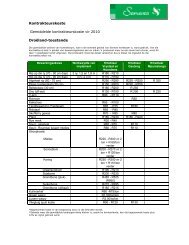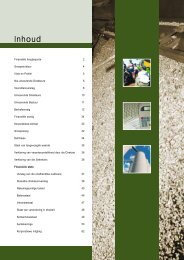Februarie/Maart
Februarie/Maart
Februarie/Maart
Create successful ePaper yourself
Turn your PDF publications into a flip-book with our unique Google optimized e-Paper software.
46<br />
••• DEvElopiNG aGricUlTUrE<br />
Tighten your farm cash flow<br />
continued from page 45<br />
even before they occur. This will give you time to<br />
alter your plans and remedy the problems by timing<br />
cash inflows and outflows, thereby maintaining<br />
liquidity reserves.<br />
• Improving profitability. analyse profits and the<br />
profitability of your business. Once the farm is<br />
profitable, you can concentrate on other cash<br />
flow problems. Take note however that treating a<br />
cash flow problem at the expense of profitability<br />
is a short-term remedy that may have bad longterm<br />
effects.<br />
• Changing production plans. Perhaps another<br />
crop in the rotation or a livestock enterprise<br />
would increase cash flow and allow you to maintain<br />
profitability at the same time.<br />
• Improving your marketing plan. Consider cash<br />
needs and markets available in the timing of your<br />
sales.<br />
• leasing or renting. Down payments can put a<br />
heavy burden on your cash flow. assess the impact<br />
of leasing and rental against the profitability<br />
of your farm.<br />
• Reducing living expenses. Carefully review your<br />
><br />
family budget. Distinguish between necessities<br />
and wants. base family spending on the performance<br />
of the farm business.<br />
• Earning a non-farm income. You can engage in<br />
another income generating business. however,<br />
be aware that the business is not detrimental to<br />
your focus on the farm business operations.<br />
• Refinancing. When the market is expected to<br />
improve in the short run, you can use refinancing<br />
as a strategy to buy time so that a cash short fall<br />
can be absorbed over several production periods.<br />
however, if the farm is not profitable itself, the<br />
problem is just prolonged.<br />
Tip: Do not use production credit for intermediate<br />
or long-term assets, because proceeds from<br />
one production period can not be expected to<br />
cover even for the costs of assets.<br />
• liquidating assets. If assets are to be liquidated,<br />
sell your unprofitable assets first. Then you<br />
may even consider downsizing the operations.<br />
This has to be done after doing an indepth longterm<br />
financial analysis of the impact of these sort<br />
of corrective measures.<br />
• Maintain credit reserves. Manage debt in order<br />
to maintain a credit reserve. If you borrow to the<br />
limit and other cash inflows stop, your liquidity<br />
reserve will sooner dry up and bills will accumulate.<br />
let your creditors know about your cash flow<br />
problems and what you are doing to solve them.<br />
good cash flow management has a double benefit<br />
– it can help you to avoid the debilitating effect of a<br />
cash crises and it can grant you a commercial edge<br />
in all your transactions. S<br />
Resource<br />
Cash flow planning and management, Publication 933.<br />
agricultural extension Services: University of Tennessee.<br />
>><br />
Sipho Lowane is an Agricultural Economist and Coordinator<br />
at Senwes Agricultural Services. Contact him at (018)<br />
464-7378 or send an email to sipho.lowane@senwes.co.za.<br />
www.senwes.co.za • <strong>Februarie</strong>/<strong>Maart</strong> 2011


